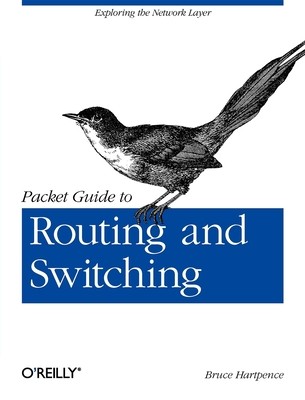
- We will send in 10–14 business days.
- Author: Bruce Hartpence
- Publisher: O'Reilly Media
- Year: 2011
- Pages: 160
- ISBN-10: 1449306551
- ISBN-13: 9781449306557
- Format: 17.5 x 23.1 x 1.8 cm, softcover
- Language: English
- SAVE -10% with code: EXTRA
Reviews
Description
Go beyond layer 2 broadcast domains with this in-depth tour of advanced link and internetwork layer protocols, and learn how they enable you to expand to larger topologies. An ideal follow-up to Packet Guide to Core Network Protocols, this concise guide dissects several of these protocols to explain their structure and operation.
This isn't a book on packet theory. Author Bruce Hartpence built topologies in a lab as he wrote this guide, and each chapter includes several packet captures. You'll learn about protocol classification, static vs. dynamic topologies, and reasons for installing a particular route.
This guide covers:
- Host routing--Process a routing table and learn how traffic starts out across a network
- Static routing--Build router routing tables and understand how forwarding decisions are made and processed
- Spanning Tree Protocol--Learn how this protocol is an integral part of every network containing switches
- Virtual Local Area Networks--Use VLANs to address the limitations of layer 2 networks
- Trunking--Get an indepth look at VLAN tagging and the 802.1Q protocol
- Routing Information Protocol--Understand how this distance vector protocol works in small, modern communication networks
- Open Shortest Path First--Discover why convergence times of OSPF and other link state protocols are improved over distance vectors
EXTRA 10 % discount with code: EXTRA
The promotion ends in 17d.17:48:35
The discount code is valid when purchasing from 10 €. Discounts do not stack.
- Author: Bruce Hartpence
- Publisher: O'Reilly Media
- Year: 2011
- Pages: 160
- ISBN-10: 1449306551
- ISBN-13: 9781449306557
- Format: 17.5 x 23.1 x 1.8 cm, softcover
- Language: English English
Go beyond layer 2 broadcast domains with this in-depth tour of advanced link and internetwork layer protocols, and learn how they enable you to expand to larger topologies. An ideal follow-up to Packet Guide to Core Network Protocols, this concise guide dissects several of these protocols to explain their structure and operation.
This isn't a book on packet theory. Author Bruce Hartpence built topologies in a lab as he wrote this guide, and each chapter includes several packet captures. You'll learn about protocol classification, static vs. dynamic topologies, and reasons for installing a particular route.
This guide covers:
- Host routing--Process a routing table and learn how traffic starts out across a network
- Static routing--Build router routing tables and understand how forwarding decisions are made and processed
- Spanning Tree Protocol--Learn how this protocol is an integral part of every network containing switches
- Virtual Local Area Networks--Use VLANs to address the limitations of layer 2 networks
- Trunking--Get an indepth look at VLAN tagging and the 802.1Q protocol
- Routing Information Protocol--Understand how this distance vector protocol works in small, modern communication networks
- Open Shortest Path First--Discover why convergence times of OSPF and other link state protocols are improved over distance vectors


Reviews